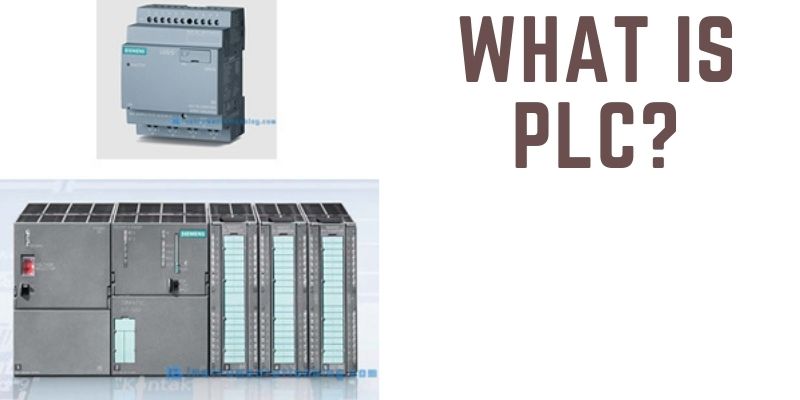
Programmable Logic Controllers (PLCs) are indispensable tools in modern industrial automation, bringing efficiency, reliability, and flexibility to various industries, including manufacturing, automotive, and food processing. Before PLCs were introduced, industries relied on complex relay-based systems for automation, which were cumbersome to modify, time-intensive, and error-prone. The advent of PLCs transformed these challenges by providing a versatile, programmable solution that integrates seamlessly into various industrial processes.
The Evolution and Significance of PLCs in Automation
The introduction of PLCs revolutionized automation by offering an affordable and scalable solution to control machinery and processes. Unlike traditional relays, PLCs require no physical rewiring when a production process changes. Instead, their behavior can be modified through software programming, significantly reducing downtime and labor costs. These devices are robustly designed to withstand industrial environments and are equipped with advanced features to enhance precision and control.
In recent years, the integration of Internet of Things (IoT) technologies with PLCs has further enhanced industrial automation. This convergence allows PLCs to connect with IoT-enabled devices, enabling real-time monitoring, data analysis, and predictive maintenance across networks. Businesses are increasingly adopting this trend to create smarter factories, leveraging IoT to streamline operations and improve productivity. For those interested in understanding the synergy between these technologies, IoT Training in Chennai provides valuable insights into IoT frameworks and their industrial applications.
PLCs have become the backbone of automation, particularly in industries that demand reliability and flexibility in their operations. For instance, automobile assembly lines use PLCs for real-time control and monitoring of robotic arms, conveyors, and welding machines. When coupled with IoT, these systems can collect and analyze vast amounts of data from connected sensors, offering actionable insights to optimize processes further.
Read more: Important Reasons for Human Resource Planning in an OrganizationCore Components of PLC Systems
Understanding the components of PLC systems is crucial for those seeking expertise in automation. The three main components are the Input-Output Modules, Central Processing Unit (CPU), and Power Supply with Rack.
Input-Output (IO) Modules
IO modules act as the interface between the PLC and the external environment. The input module collects signals from various sensors, such as temperature probes, proximity switches, and flow meters, to provide data to the PLC. Meanwhile, the output module sends commands to actuators, solenoids, or motors to execute tasks like opening a valve or starting a motor.
These modules are designed to ensure minimal data loss even over long distances, thanks to technologies like remote amplifier units. With varying configurations, such as 4, 8, 12, or 16 terminals, IO modules can be customized to fit diverse industrial applications.
Central Processing Unit (CPU)
The CPU is the brain of the PLC, processing inputs and generating outputs through programmed logic. It houses an operating system stored in Read-Only Memory (ROM) and a program memory area for the application software. Equipped with mathematical and logical capabilities, the CPU ensures precise control over the automated processes. Additionally, battery backups are often included to prevent data loss during power outages.
Read more: How to Become Oracle Database Certified Expert?Power Supply and Rack
PLCs operate at a consistent voltage and current, facilitated by an internal power supply. The rack serves as the housing for modular PLC systems, accommodating IO modules, CPUs, and additional components. This modular design allows for easy scalability, making it ideal for industries with dynamic automation needs.
Types of PLCs
PLCs can be categorized into two primary types based on application requirements:
- Fixed PLCs: These are compact units with a predetermined number of inputs and outputs, making them suitable for simpler, standalone applications.
- Modular PLCs: Designed for complex systems, modular PLCs allow for expansion by adding IO modules to the rack. This flexibility makes them ideal for industries requiring continuous growth or process upgrades.
To gain practical exposure to such systems, students can benefit from Inplant Training in Chennai, which offers hands-on learning opportunities to work with fixed and modular PLCs in real industrial environments.
How PLCs Operate?
The operation of a PLC involves three essential steps, collectively known as the PLC scan cycle:
- Input Scan: The PLC checks the status of all connected input devices, such as sensors and switches, and updates the input memory.
- Program Scan: The CPU executes the logic defined in the program to make decisions based on the input data.
- Output Scan: The PLC updates the output memory and sends commands to the output devices, ensuring timely execution of actions.
The entire process is repeated continuously, with each cycle taking milliseconds to complete. This rapid execution enables PLCs to respond to real-time changes in the system efficiently.
Benefits of Learning PLC Programming
Gaining expertise in PLC programming opens doors to numerous opportunities in automation and control engineering. A comprehensive PLC Training in Chennai at FITA Academy equips learners with practical knowledge of PLC programming, troubleshooting, and industrial applications. With hands-on exposure to real-world scenarios, students can master advanced concepts, including PLC data manipulation and program optimization.
PLC programming is essential for developing efficient systems that improve productivity while reducing costs. The ability to program PLCs for specific industrial needs ensures that businesses remain competitive in the evolving landscape of automation.
PLCs are an integral part of modern automation systems, ensuring efficient control and monitoring of industrial processes. Their flexibility, robustness, and ability to handle complex tasks make them indispensable in industries worldwide. To gain a competitive edge in automation, consider enrolling in the Embedded System Course in Chennai at FITA Academy, where you’ll gain in-depth knowledge and practical experience, setting the foundation for a successful career in industrial automation.
Read more: Benefits of Blockchain in Supply Chain Management